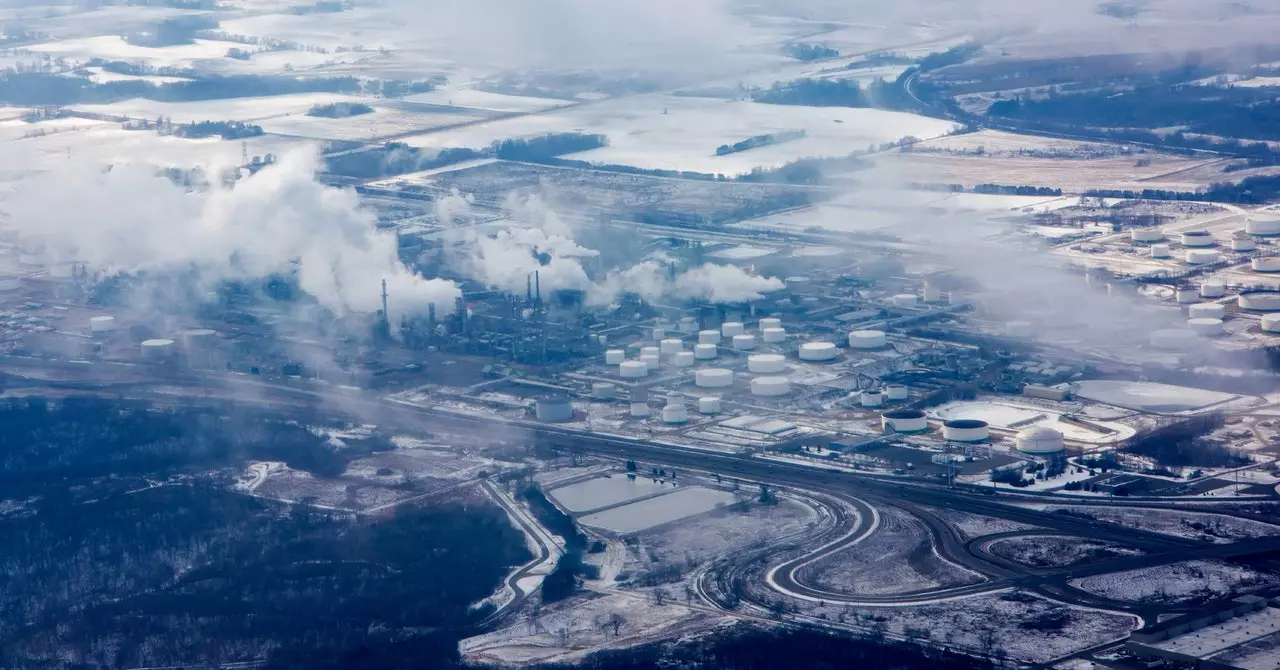The push for sustainable aviation fuel (SAF) is gaining momentum as industries scramble to address climate concerns, and a noteworthy initiative is emerging from the Upper Midwest. Following a strategic development involving the Pine Bend Refinery in Rosemount, Minnesota, the aviation sector is poised to tap into an essential source of greener fuel. This move, spurred by a deal announced in September, aims to funnel SAF blended into conventional jet fuel through a pipeline directly to Minneapolis-St. Paul International Airport. The partnership includes heavyweights like Koch Industries, Deloitte, and Bank of America, highlighting the potential financial and environmental impact of this development.
One facet of this project is particularly noteworthy: the ambitious goal to mix up to 50% SAF into the fuel supply by 2025, ultimately producing 1 billion gallons annually. This could revolutionize not only the Minneapolis airport but potentially scale to support airports across the nation. However, this ambitious vision is underscored by pressing financial considerations and the reliance on governmental support structures.
The cornerstone of sustainable fuel development depends heavily on the financial frameworks established under the Inflation Reduction Act passed during the Biden administration. This act provided a lifeline for projects like the Pine Bend initiative, setting the stage for potential growth in SAF production. However, changes in political leadership could jeopardize the foundations required to foster this burgeoning industry. Recent statements from industry experts indicate that federal incentives are currently “on life support,” particularly under the possibility of a Trump-led administration.
Scott Irwin, an academic specializing in agricultural and consumer economics, warns that the dismantling of such essential support could leave companies like Montana Renewables—one of the few SAF producers—vulnerably exposed. The instability in federal funding not only threatens ongoing projects but could also deter future investments vital for the trajectory of the SAF industry.
Beyond financial concerns, the logistics and infrastructure of the SAF sector present their own set of challenges. The intricacies involved in blending SAF with conventional jet fuel necessitate significant technical advancements and operational readiness. For instance, Flint Hills Resources, a Koch subsidiary, revealed that intended infrastructure developments—like specialty pumps for SAF blending—are anticipated to face delivery delays of up to a year.
Such logistical hurdles underscore the complexities of rolling out an integrated fuel system that can meet the nuanced demands of the aviation industry. With conventional jet fuels being the norm, transitioning towards sustainable alternatives will require substantial investments in technology and operational adaptations. This reality includes procuring the necessary equipment to facilitate SAF blending and ensuring a steady supply chain that can meet demand.
As the discussion around SAF continues to evolve, key stakeholders must navigate the delicate balance between innovation and the policies that underpin this progress. There is a growing recognition of the potential of SAF not just to mitigate carbon emissions but to lead the charge in a more sustainable aviation landscape. However, realizing this vision will demand coordinated efforts between public and private sectors, notably in securing financial backing and streamlining regulatory frameworks.
While the initial phase of the Pine Bend project shows promise, the path forward remains littered with challenges that could thwart its aspirations. Investors and policymakers are urged to recognize the critical role of sustained incentive programs in facilitating SAF production. As we advance, the collaborative spirit among industries, regulators, and innovators could dictate whether or not the Upper Midwest becomes a beacon for sustainable aviation fuel on a national scale.
While potential exists for the sustainable aviation fuel sector to flourish, realizing this potential requires unwavering commitment from various stakeholders to overcome financial and infrastructural challenges that could impede progress. As awareness around climate change intensifies, the success or failure of initiatives like the one linked to Pine Bend could serve as a litmus test for the aviation industry’s future in the pursuit of sustainability.

